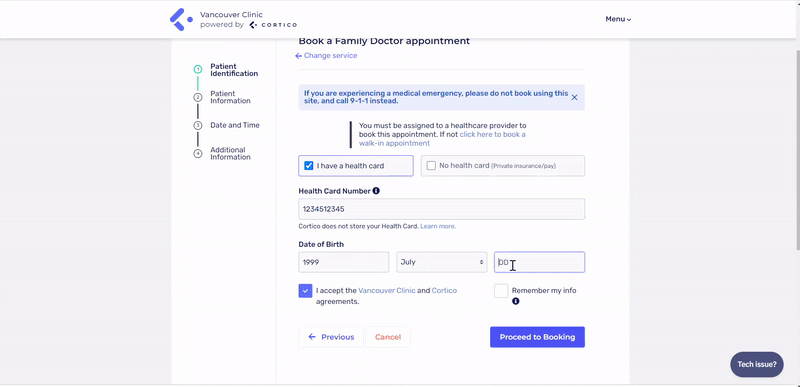From paper documentation to Electronic Medical Records, clinics are slowly but surely adopting greater efficiency. Searching for patient files was once a tedious task, but can now be solved with just a few clicks. Still, has there been a closer look at how to increase efficiency for the daily workloads of Medical Office Assistants (MOAs)?
MOAs still juggle many tedious tasks, which can lead to overwork and burnout. Findings from a study exploring the impact of the COVID-19 pandemic on MOAs show 49% of MOAs experience burnouts and 43% are overwhelmed by their workload (Prasad et al., 2021). Nearly half of MOAs feel challenged in their current role due to lack of support from effective systems.

You may ask, what comes after the burnout? These stress-inducing work environments can lead to MOAs leaving the clinic for good. MOAs rank the highest turnover rates among other non-clinical support staff. One recent study shows a 20% turnover rate for MOAs (Ballou-Nelson, 2018).

As demand for primary care continues to rise, something must be done to take the weight off MOAs while allowing them to complete their important workloads.
Here we will introduce the top three tedious tasks that MOAs face and how Cortico’s digital MOA tools can help them reduce their administrative workload and create an efficient work environment.
Top Three Frustrating MOA Experiences With Corresponding Solutions:
1. The Phone Rings Non-Stop.
Out of many tasks MOAs perform, answering an endlessly ringing phone can be the most tedious of all. Not only can incoming calls disrupt an MOA from completing other tasks, it can also create frustration for patients in the clinic who are seeking immediate attention.
The use of a phone line as the only method of booking leaves no choice for MOAs: they have to consistently delay assisting the patients right in front of them. Conversely, putting patients on hold creates unnecessary feelings of frustration for all involved parties.
Cortico Solution : Patient Self-Booking + Registration Online
Whether they are new or returning patients, they can easily schedule their own appointment from the clinic’s website. By allowing patients to book their appointments independently, MOAs can focus on providing assistance to doctors and triaging more complex issues.

2. Too Many Appointments to Confirm, Follow Up, or Reschedule.
The pathway from booking an appointment to attending the visit is not as linear as it may seem. Patients can cancel, no-show, forget the appointment time, or miss their visit for another reason, leading the clinic to lose revenue.
To prevent these frustration, clinics not using reminder system require MOAs to make time to call patients with reminders, or follow-up manually to book the next appointment. Yet, again, the MOA becomes occupied by the phone when they could be completing other tasks.
Cortico Solution : Email & SMS Reminders
Cortico’s reminder system allows clinics to completely automate their reminder process, saving MOAs time since they no longer need to manually contact patients.
After booking an appointment, patients receive useful reminders via email or SMS, based on their designated preference. These reminders not only increase the rate of attendance, but also prompt patients to realize in time if they need to cancel or reschedule.

3. The Waiting Room is Crowded and Congested.
There never seem to be enough chairs in the waiting room. So why are waiting areas so busy? As a patient enters a clinic, they are required to check-in with the front desk, and may be required to fill out some forms. Some patients have many questions for the MOA, which can delay sign-in for patients who arrive after them.
Any interruption at the front desk or back-up schedules immediately reflect in the waiting room. Due to this, it is crucial for MOAs to manage the patient flow in the waiting room before it gets out of hand.
Cortico Solution : Clinic Kiosk + “Now Serving” Status
In a Cortico-powered clinic, patients are first introduced to a kiosk where they can sign-in to the clinic on their own and answer any questions requested by the clinic. This enhances the efficiency of the check-in process for both patients and MOAs, enabling MOAs to manage their time more effectively.
Conclusion
Preventing the top three frustrations faced by MOAs can reduce heavy workload and burnouts, which in turn reduces the risk of turnover. Cortico doesn’t just offer clinics a temporary solution, it works collaboratively with clinics to customize their ideal workflow employing efficient, user-friendly features.
By incorporating Cortico solutions into MOAs’ day-to-day workflow, they’re able to save time and assist doctors with preparing patient appointments.
Try Cortico for yourself - schedule a 15 minute demo with our team today!

To find out how Cortico can solve many more frustrations listed above, check out our Features page.
References
Prasad, K., McLoughlin, C., Stillman, M., Poplau, S., Goelz, E., Taylor, S., Nankivil, N., Brown, R., Linzer, M., Cappelucci, K., Barbouche, M., & Sinsky, C. A. (2021). Prevalence and correlates of stress and burnout among U.S. healthcare workers during the COVID-19 pandemic: A national cross-sectional survey study. EClinicalMedicine, 1-9. https://www.thelancet.com/journals/eclinm/article/PIIS2589-5370(21)00159-0/fulltext
Ballou-Nelson, P. (2018). Employee turnover - How do you compare? Medical Group Management Association Insight. https://www.mgma.com/resources/resources/human-resources/employee-turnover-how-do-you-compare

